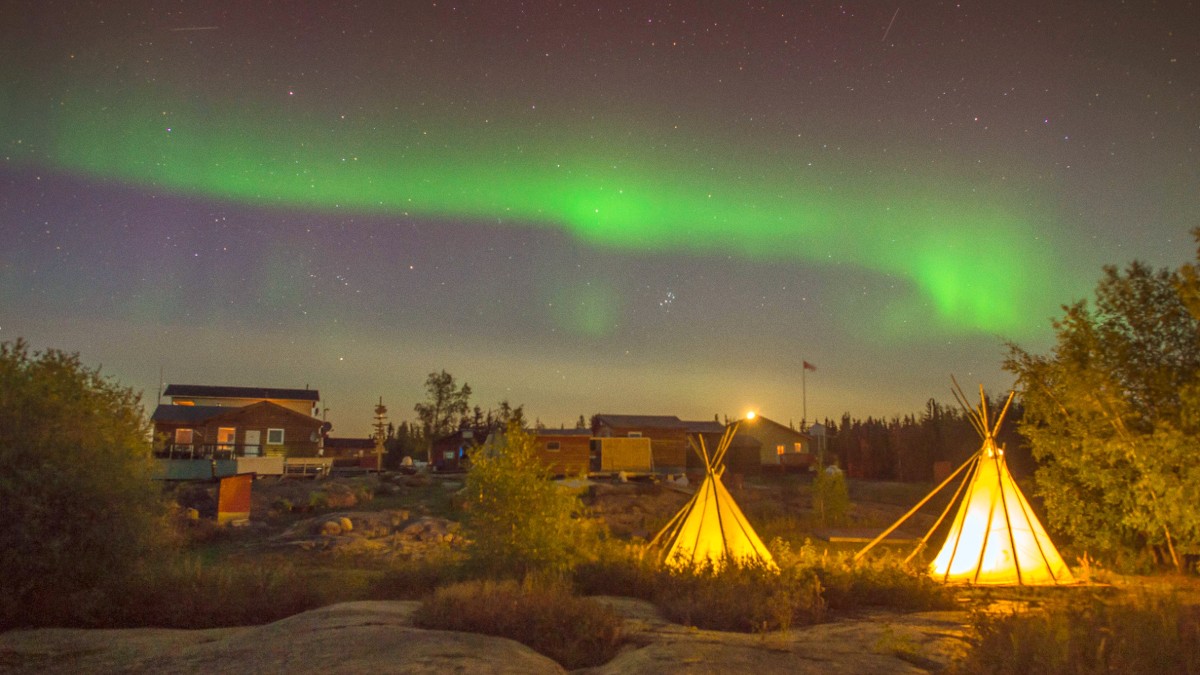
Northwest Territories, Canada
Yellowknife Airport (YZF) functions as the main gateway to the Northwest Territories, connecting the region to major Canadian cities. It is conveniently located approximately 5 kilometers (3 miles) east of downtown Yellowknife, allowing for a quick transfer to your accommodation.
Yellowknife Airport does not receive direct international flights from major global hubs. International travelers typically connect through major Canadian cities, like Vancouver (YVR), Calgary (YYC), or Edmonton (YEG). Plan your international flight to land at one of these larger Canadian airports, then take a domestic flight to Yellowknife.
Flight prices vary significantly by season. Peak aurora viewing season (Dec-Mar) sees higher prices and quicker sell-outs. Consider tools like Dollar Flight Club for deals or Skyscanner for comparisons.
Flights to Yellowknife are available year-round. Shoulder and low seasons (May-June, Sep-Oct) often provide better deals. Book peak season flights 3-6 months in advance.
Rental company desks are within the airport terminal. Booking a rental car in advance is advisable, especially in winter, as vehicle availability can be limited. Consider DiscoverCars.com for options.
No specific exit fees or taxes are imposed on departing travelers directly from Yellowknife Airport, beyond what is already included in your airline ticket fare.
For domestic flights, arrive at least 90 minutes before departure. For international connections, allow extra time at your connecting city for security and transfers.
Yellowknife Airport (YZF) has basic amenities: check-in, baggage drop, security, a small gift shop, and a cafe. Seating is available in the departure lounge.
Road access to Yellowknife is possible and presents a different perspective on the Northern landscape. Yellowknife is reachable via Highway 3, connecting to Highway 1 (the Mackenzie Highway) from Alberta. The drive from Edmonton is approximately 1,500 kilometers (930 miles), taking about 16-18 hours of driving time.
Conditions vary greatly by season, with winter presenting particular challenges.
While self-driving is the main land transport option for visitors, other forms exist with limitations.
Yellowknife's geography means specific border and water travel notes.
Yellowknife's public bus system provides a convenient and affordable way to navigate the city. Yellowknife Transit operates fixed routes covering most residential and commercial areas. This system provides reliable service, though frequency can vary.
Taxis offer a convenient on-demand transportation option in Yellowknife, notably for quick trips or when carrying luggage. Major ride-sharing apps like Uber or Lyft do not typically operate in Yellowknife.
Yellowknife generally presents enjoyable opportunities for walking, permitting a slower experience of the city's unique charm.
Yellowknife has limited dedicated bicycle lanes, but cycling is common on roads and multi-use trails (like Frame Lake Trail) in summer.
Major international car rental companies (Avis, Budget, Enterprise, National) have offices in Yellowknife, including at the airport. Booking in advance is recommended, especially in winter.
Yellowknife's pedestrian-friendly areas and a popular trail contribute to pleasant exploration by foot or bike.
Car rental is widely available, and bike rentals are an option in summer.
Yellowknife does not have hop-on-hop-off services. Many tour operators provide transportation as part of aurora tours or day excursions.
Water taxis or tour boats can take visitors to islands on Great Slave Lake, providing unique perspectives and access to the houseboat community.
Public transit buses are generally accessible. Yellowknife's terrain can be challenging in winter due to snow/ice. Research and contact providers directly for specific needs.
For independent exploration within the city, a mix of walking and public transit works well. For ventures outside city limits or in winter, car rentals or guided tours are advisable.